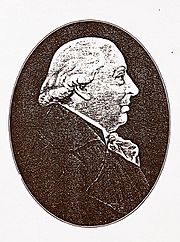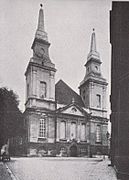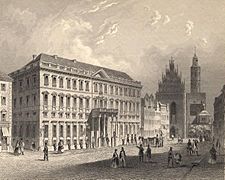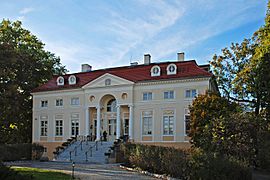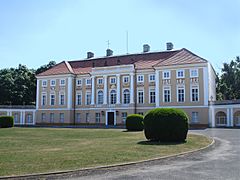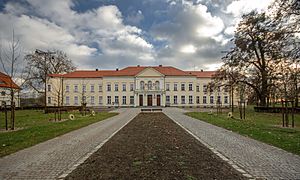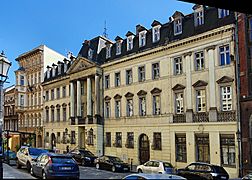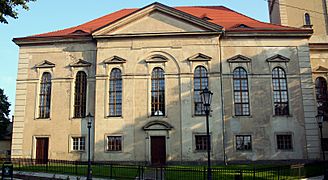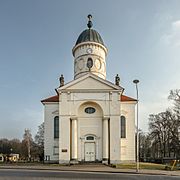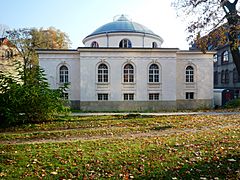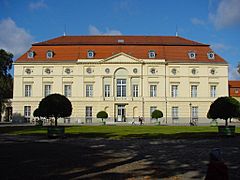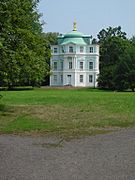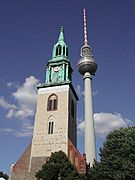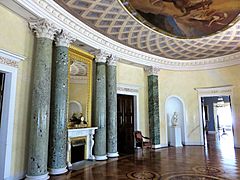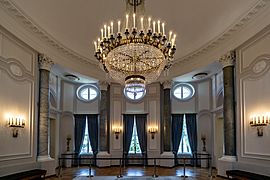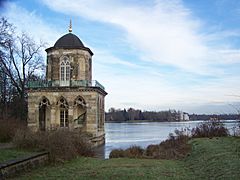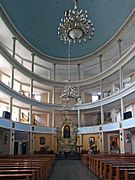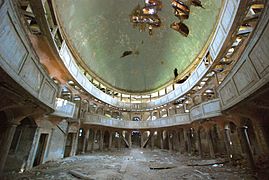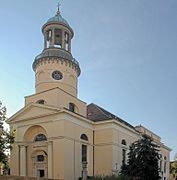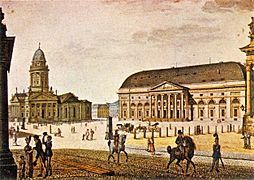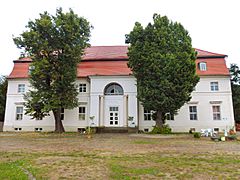Carl Gotthard Langhans facts for kids
Carl Gotthard Langhans (born December 15, 1732 – died October 1, 1808) was a talented architect from Prussia. He designed many important buildings like churches, palaces, and theaters. His work helped start the Neoclassical architecture style in Germany. This style used ideas from ancient Greek and Roman buildings.
Langhans is most famous for designing the Brandenburg Gate in Berlin. This gate is now a national symbol for Germany and represents German reunification in 1989/90.
Contents
Life of Carl Gotthard Langhans
Langhans was born in a place called Landeshut in Silesia (now Kamienna Góra, Poland). He didn't study architecture at first. From 1753 to 1757, he studied law in Halle. After that, he learned mathematics and languages. He taught himself architecture by reading old books, especially those by the Roman architect Vitruvius. He also studied the works of Johann Joachim Winckelmann, who loved ancient Greek art.
Early Career and Royal Connections
Langhans first became known as an architect for his design of a Protestant church called "Zum Schifflein Christi" in Głogów (1764). In the same year, he became a building inspector for the Count of Hatzfeld. Langhans rebuilt the Count's palace, which had been damaged in a war. This project lasted from 1766 to 1774.
Because of the Count of Hatzfeld, Langhans became known at the royal court in Berlin. His first job for the royal family was in 1766. He built a stairwell and a special room called the Muschelsaal in Rheinsberg Palace.

From 1775 to 1788, Langhans was in charge of building projects in the Prussian province of Silesia. In 1788, King Frederick William II of Prussia made him the main director of the royal building commission in Berlin.
Designing the Brandenburg Gate
The King immediately asked Langhans to design the Brandenburg Gate. It was built between 1788 and 1791. The gate replaced older, simpler guardhouses. Langhans based his design on the Propylaea, which was the grand entrance to the Acropolis in Athens, Greece. This style, called Greek Revival architecture, became popular because of the research by Johann Joachim Winckelmann.
Another important architect from that time was David Gilly. He was younger than Langhans and had more modern ideas. Gilly was also a teacher to a young architect named Karl Friedrich Schinkel. Schinkel would later become very famous in Prussia.
Langhans passed away on his estate near Breslau (now Wrocław).
Family Life
In 1771, Langhans married Anna Elisabeth Jaeckel. She was the daughter of a lawyer in Breslau. They had five children together. Their daughters were Louise Amalie and Juliane Wilhelmine. They also had a son, Carl Ferdinand Langhans, who later became a theater architect. Two other children died shortly after they were born.
From 1782, Langhans and his family lived in his in-laws' house in Breslau. In 1788, they moved to Berlin. There, Langhans built his own house where they lived.
Study Trips and Learning
In the late 1700s and early 1800s, many artists dreamed of traveling to Italy. They wanted to see ancient buildings with their own eyes. Carl Gotthard Langhans was lucky enough to make this dream come true. He went on a trip in 1768 and 1769, thanks to the support of the Count of Hatzfeld.
Later, when he was in charge of the war and dominion chamber in Wrocław, he traveled even more. On behalf of the king, he visited England, Holland, Belgium, and France. These trips helped him learn about different architectural styles and ideas.
Images for kids
-
Wrocław (Breslau) Palais Hatzfeld (1765)
-
Lutheran Church in Waldenburg (1785)
-
Brandenburger Tor in Berlin (1789)
-
Royal National Theater at Gendarmenmarkt, Berlin (1800)
See also
 In Spanish: Carl Gotthard Langhans para niños
In Spanish: Carl Gotthard Langhans para niños



